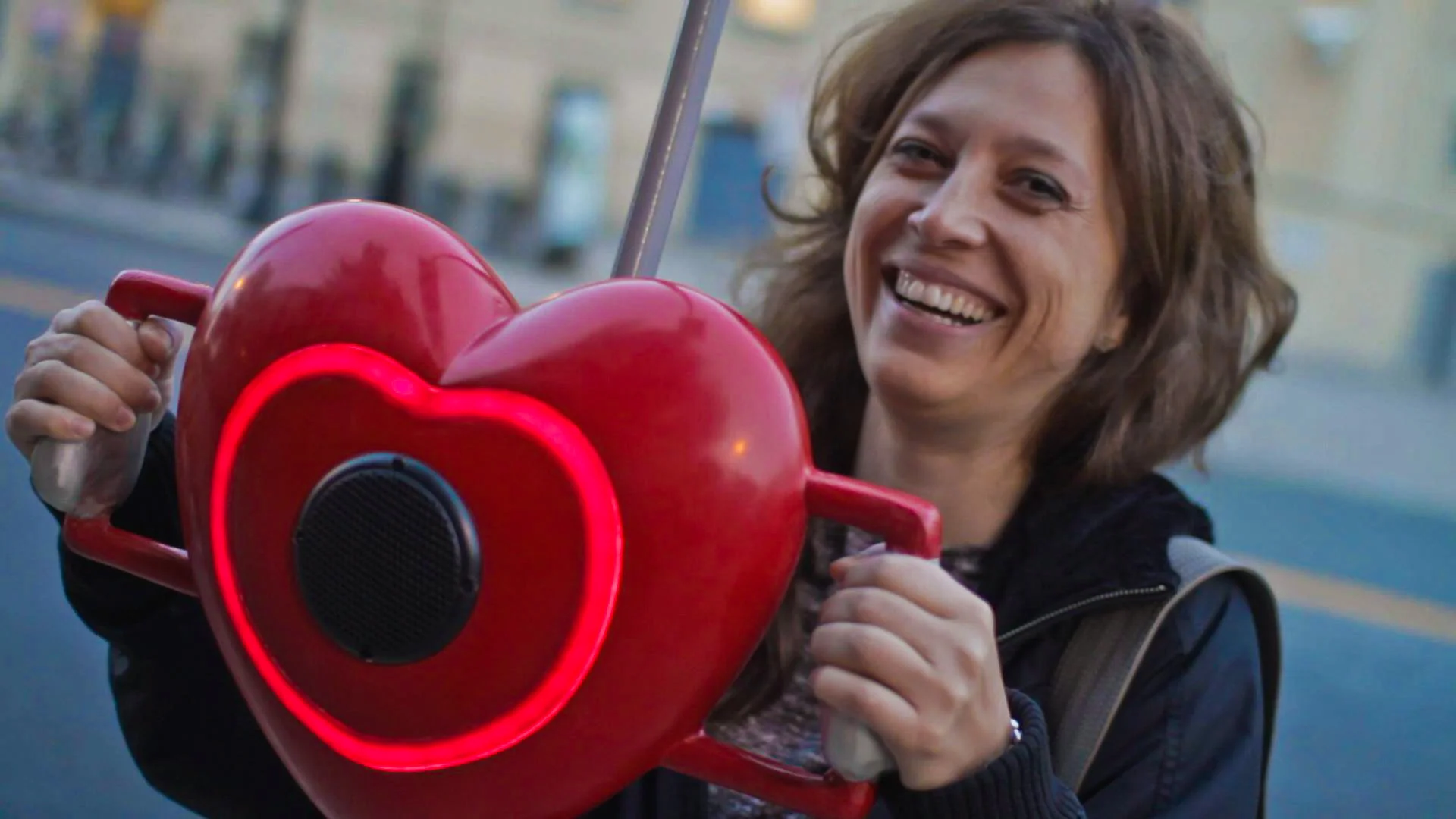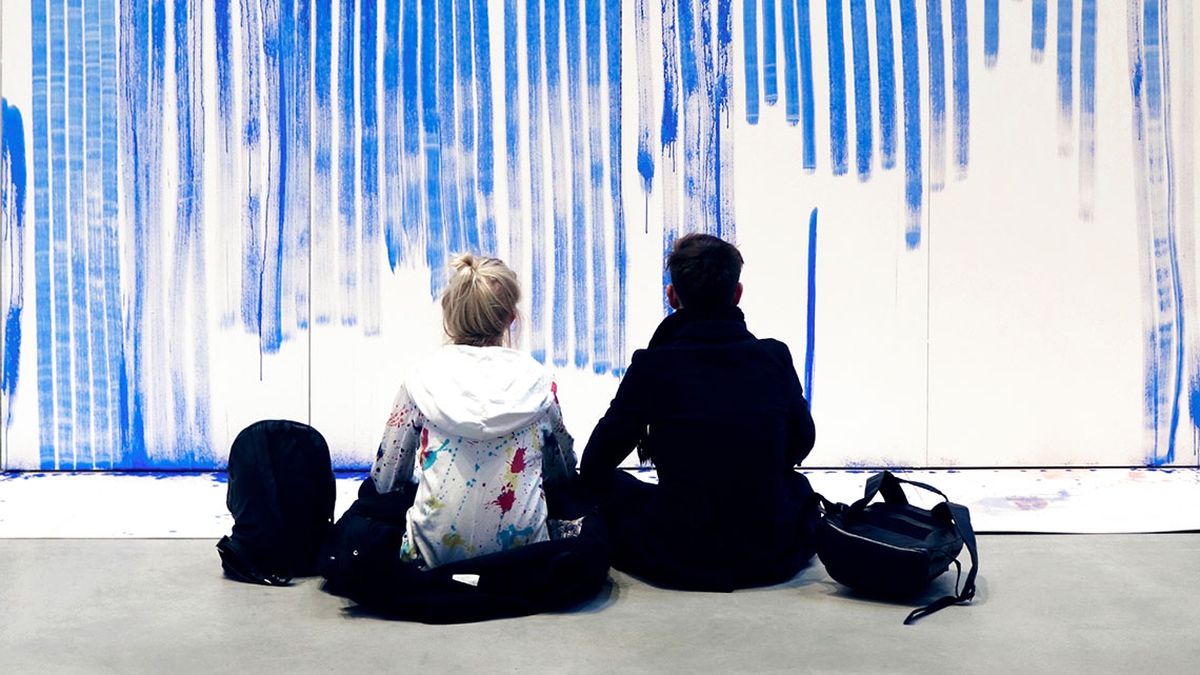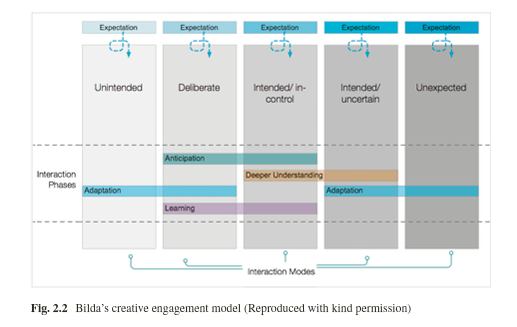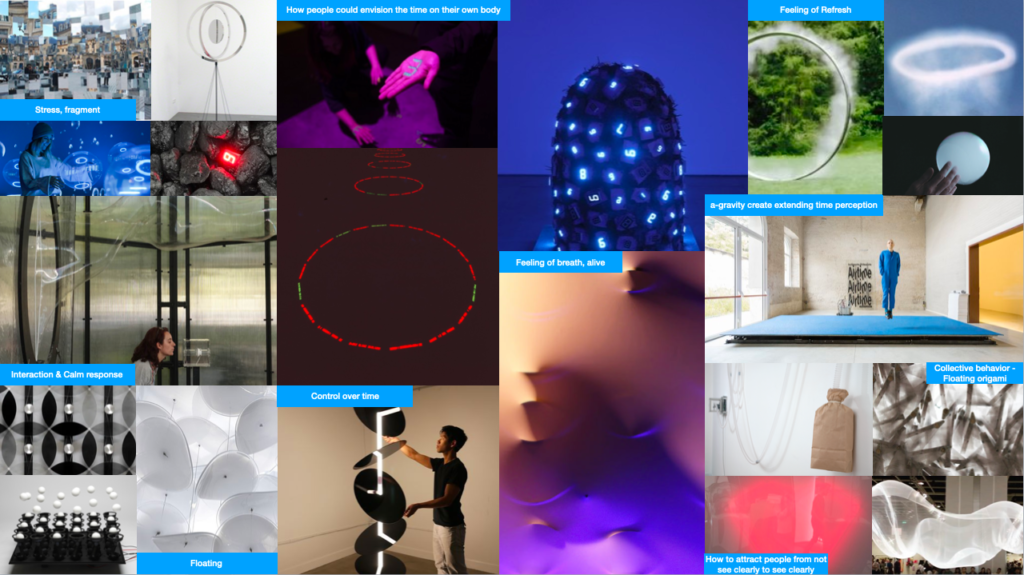Week 3 | Re-scope the topic and explore the idea
Updated conceptual direction
Mood Board:


Dream Review V2.0
Everyone is running, you can’t be left behind.
The burst of information flow and high production efficiency in the digital age makes the individual’s time in work and life compressed and accelerated.
As described by Chinese science fiction writer Chen Qiufan in his book Fish of Lijiang, companies manipulate employees’ productivity by the technology of adjusting their perception of time, while offering bogus time-adjusting healing services when employees are on the verge of breaking down.
As a response, the project Recovery aims to create a new space in urban life that modulates the perception of time, giving people breathing at their own pace, aware of urban rhythem and rethink the relationship between the system and the individual.
Located in front of the square of Jing An Park, Shanghai, the art project Recovery is an interactive installation that welcomes one person or multiple people to experience breathing simultaneously. This project underscores the humor of everyday life, inviting us to experience the stage-like quality of a Shanghai street with a new sense of wonder and possibility.
Breathing as a rhythm of life is the internal time regulation mechanism of the human body, and symbolizes the choice of self-control. This interactive project aims to uncover an unseen part of life and bring it back to experience. It shows how our neglected breath can help stressful people in big cities relax and how social support from others could bring a joyful experience and the possibility of reconstruction of collective rhythm.
“I find that it is a very relaxing and meditative place to be and that many people seem to be in good spirits and enjoying themselves when I am there.” One of the visitors said.
Desktop Research, supported by IMA LowRes Family
In the experiential interactive art, the main feedback of the public interactive art in this survey is to enjoy the space and works with different senses, to get calm and enjoy the present moment, and to enjoy the fun of taking photos.
– Emotional or sensory interactions lead to more return explorations.
Academic Paper Reading review,
-Pleasure Framework (Costello and Edmonds),
- Creation – personal expressing power and opportunity. Having the power to create something while interacting with a work.
- My question: How much power I would like to offer to the participator?
- Exploration – Understand the intention and the context in which it occurs.
- My question: How could I deliver the message of my design intention before the interaction?
- Discovery – is the pleasure participants get from making a discovery or working something out.
- My question: How the interaction mechanism and the interactive interface would imply and guide the participator?
-Higher relevance feature:
- Sensation – physical action the work evokes, touch, body movement, hearing, vocalizing, etc.
- My question: What sensation will the participator get?
- Camaraderie – developing a sense of friendship or intimacy with someone.
- My question: How do I design the behavior to create camaraderie?
- Sympathy – sharing emotional or physical feelings with something.
- My question: Joyful and relief, self and collective awareness.
- Subversion – breaking rules or seeing others break them, or twisting the meaning of something.
- My question: What’s the rule I want to break?
- Captivation(Confusion)- the feeling of mesmerize or spellbound and being controlled Over (Berlin Patriot)
- My question: What type of incentive could I leverage to increase the feeling of spellbound and control over to increase the tension.
- Simulation – perceiving a copy or representation of something from real life.
- The personification of objects giving the emotional response.
- Fantasy – perceiving a fantastical creation of the imagination
- How to create a sense of time travel or inner peace?
- Difficulty – intellectual level in work that requires a certain amount of skill to understand the works or content.
- Do I want to design the content to challenge the intelligence of the participator? Or will this lead to lost confidence an awkward feeling in the public space?
- Competition – is the pleasure participants get from trying to achieve a defined goal.
- Danger – feel scared or taking a risk.

- Stage 1 Adaption: unintended action mode to deliberate action mode.
- Participators adapt to changes in the environment, learning how to behave and how to set expectations. When participants see new objects and environments to interact with, they first make judgments about what is likely to happen, try to define objects, look for associations and objects that can be changed. Therefore, when designing a first impression, one needs to consider how to improve the symbols that can be guessed while creating a curiosity attraction.
- Stage 2, Learning: in-control mode
- Understand interaction mechanisms, adjust actions and expectations for behavior, and work based on feedback.
- Stage 3, Anticipation:
- Start to predict the interaction. In-control mode.
- Stage 4, Deeper understanding:
- Understanding and generating the relationship with the artworks, judging and evaluating at a higher, conceptual level. From intended/control model to intended/uncertain mode.
Related Posts
Leave a Reply Cancel reply
You must be logged in to post a comment.
Kat Sullivan
Adam Colestock
Helen (Chenuan) Wu
Christina Lan
Dorian Janezic
George Faya
Julia Myers
Kelsie Smith
Michael Morran
Po-Wen Shih
Liu Siyan
Fisher Yu
—
Craig Protzel
Christopher Wray
Haoqi Xia
Hayden Carey
Katherine Nicoleta Helén
Maria Maciak
Parisa Shemshaki
Sakar Pudasaini
Skyler Pierce
Steven Doughty
Yiqi Wang
—
Andrew Lazarow
Benoit Belsot
Enrique García Alcalá
Hongyi Zhang
Jay Mollica
Li Shu
Teddy (Jian) Guo
Monika Lin
Wenye Xie
Yiru Lu

